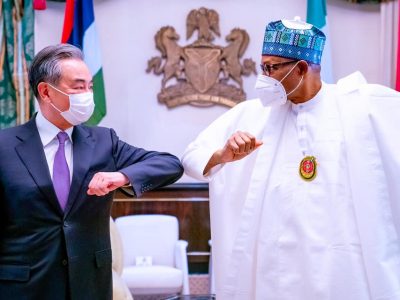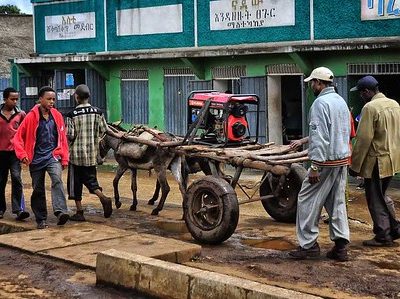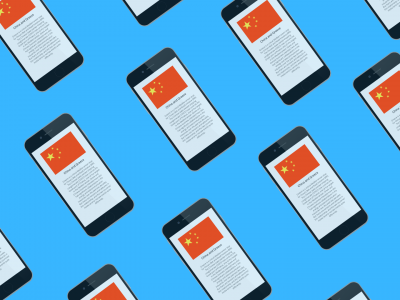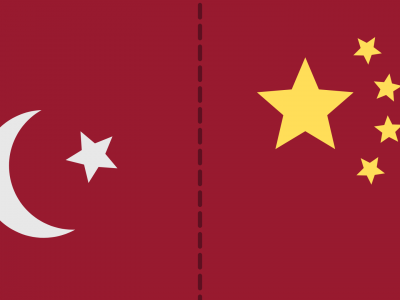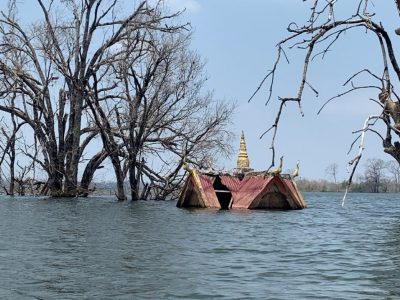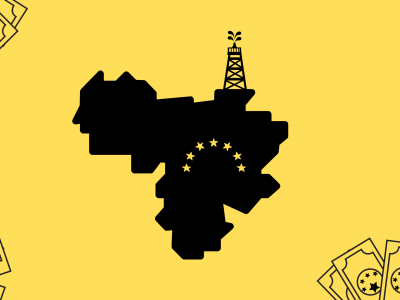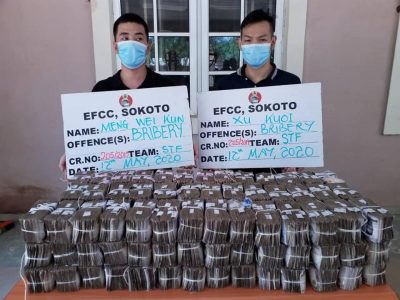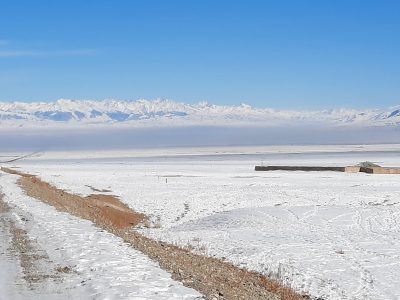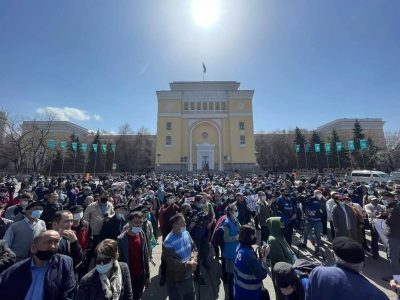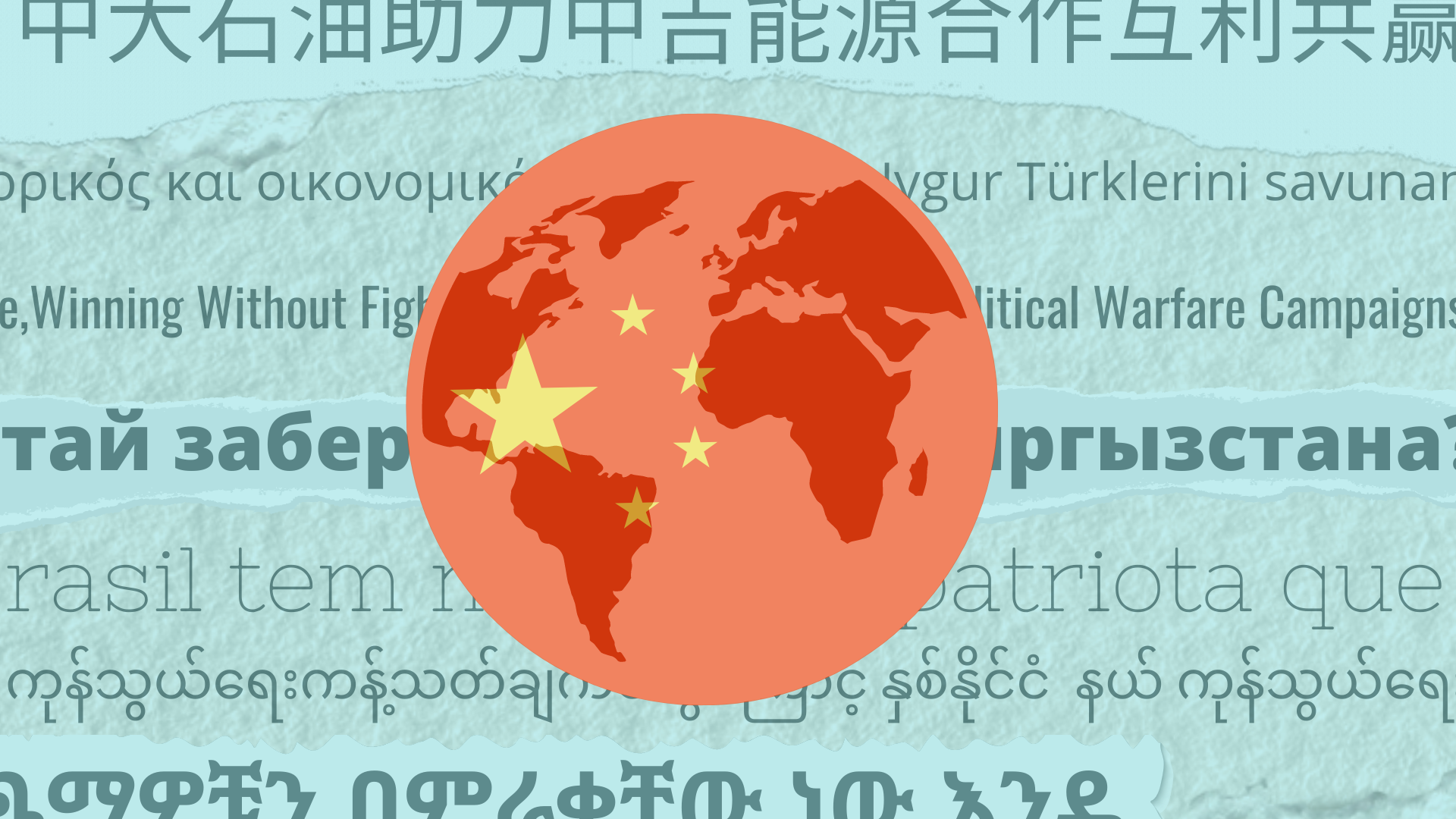
Illustration by Giovana Fleck, used with permission.
As China expands and advances its interests as a global power, it is important to understand how it projects its ambitions in other countries. Chinese diplomacy took a key turn in 2013 when it announced its One Belt, One Road strategy, or “一带一路”. Now commonly known as the Belt and Road Initiative (BRI), the strategy was enshrined in the country’s constitution in 2017, becoming, in the view of many commentators, the keystone of Chinese foreign policy.
Now active in dozens of countries, the Belt and Road Initiative focuses on infrastructure development, but also includes a significant soft power component. China has made no secret of its intent to shape global information environments for its own benefit. It has invested in massive surveillance and censorship at home, international broadcasting, foreign media, online/mobile platforms, state-supported marketing, and a global expansion of its communications technology companies. It has also provided support for other countries to adopt its approach to a “sovereign internet” using a mix of regulatory influence, technology transfer, and aggressive policy promotion in key multilateral international forums.
While the Belt and Road Initiative plays out across all continents, local societies and communities hold differing perceptions of its benefits and potential harms, despite China’s extensive public relations and propaganda effort to promote its aims.
Our investigation looks at the intersection of Chinese technology transfer, soft power, communications technology buildout, and public information. Working with local researchers and writers in a dozen countries, we explore the ways China advances narratives that bolster its drive for global power, and how local perspectives either support or counter China’s ambitions.
 Framing China's Belt and Road Initiative
Framing China's Belt and Road Initiative
Global Voices’ Civic Media Observatory research identifies and tracks key themes and narrative frames that emerge around events, trends and other phenomena, and explains the context and subtext of local, vernacular, and multilingual media.
Download a PDF of the report.
Access the public database.
Following, find more than 50 stories about China's influence in a dozen countries, and visit the project's public dataset, built in Airtable and providing relational links and filters for study. The dataset offers numerous points of entry for curious readers and researchers interested in exploring relationships within the data. It features nuanced analysis of 124 narratives about the Belt and Road Initiative, an annotated and contextualized collection of 748 media items from 14 countries, as well as annotated sets of dominant themes and media sources.
Visit the Civic Media Observatory main page.
Read the stories
Stories about China’s Belt and Road Initiative: Deal or steal?
Turkey’s Uyghur dilemma in the context of China’s Belt and Road Initiative
As economic ties between Ankara and Beijing strengthened, Turkey's policies on the treatment of Uyghurs in China weakened.
Chinese firms in Nigeria face widespread labour abuse allegations, tainting bilateral relationship
Nigerians in that company are "mandated to call their Chinese employers master or mistress. Male Nigerian workers are physically assaulted, while their female counterparts are sexually assaulted,” writes a whistleblower.
China as a cultural threat in Ethiopia: From food to cultural appropriation
Public interest in Chinese exotic eating habits and in potential appropriation of Ethiopian traditional culture speaks of the larger rifts in Sino-Ethiopian encounters
Chinese higher education programs attract increasing numbers of students from Kazakhstan
Education abroad and study exchanges have become instruments for the Chinese government to attract foreign students, especially from Kazakhstan. Does studying in China trigger support among Kazakhstani students?
Chinese soft power in Kyrgyzstan grows through culture and language
Still looking to publicize its language and culture in Central Asia, China is using the instrument of Confucius Institutes to strengthen its soft power in Kyrgyzstan
China-funded Kaliwa dam in the Philippines flagged for irregularities
"Indigenous Peoples should not be sacrificed on the altar of development aggression, which would just benefit big businesses and Chinese investors."
Diverging narratives on the Belt and Road Initiative in Greece and China
After years of investment in the port, information on the hurdles that China’s BRI is facing in Greece differs across the language of the media reporting it.
China's unfulfilled promise to develop Venezuela's mines
The Venezuelan and Chinese governments promoted the mining sector as a solution to Venezuela's oil dependence. Despite millionaire investments, the industry is far from its achieving its promise.
Turkey and China in the eastern Mediterranean: Partners or competitors?
China and Turkey continue to collaborate on their visions for trans-continental integration, though should Ankara's political and military ambitions increase, Beijing might reconsider its role as a reliable BRI partner.
Cambodia’s China-funded mega dam linked to rights abuses and loss of fisheries
"Today, everything the dammed-up rivers provided – food, water, an income from fishing – is gone."
Venezuela and China: Strong bond or empty words?
Venezuelan authorities claim that the strategic partnership with China remains as strong as ever, but they have reaped little economic benefits from it since 2016.
Kanal Istanbul, Turkey's Middle Corridor, and the Belt and Road Initiative
The Middle Corridor, formally known as the Trans-Caspian East-West-Middle Corridor Initiative, reflects Turkey’s dream of building links to China via the Caucasus and Central Asia.
Chinese investments in Nigeria flourish on a Silk Road of corruption
The willingness of corrupt Chinese businesspeople to bribe equally fraudulent Nigerian government officials is rarely captured by the simplistic mutual understanding narrative pushed by Chinese diplomats.
Dissecting the ‘win-win’ of Chinese investment in Greece
On the surface, Sino-Greek economic relations, largely centered around shipping, are seen as bilateral ‘win-win’. But this narrative becomes more complex if one examines Greek media and political actors.
China’s wavering COVID-19 vaccine diplomacy in Turkey
Turkey procured vaccines from China in December 2020, but delivery delays and negative perceptions of China-made vaccines are now making other sources more attractive.
Are Turkish environmental groups alone in criticizing the Beijing-Ankara economic integration?
The Hunutlu coal-fired power plant is part of China's Belt and Road Initiative in Turkey, an economic and political cooperation program that Ankara joined in November 2015.
Is anti-Chinese sentiment in Kyrgyzstan strong enough to freeze a key Belt and Road Initiative project?
A logistics project in Kyrgyzstan, part of China's BRI infrastructure program, was poised to become a commercial hub in the heart of Eurasia. Despite the hype, it now seems stalled.
China’s Belt and Road megaproject in the Mediterranean: Was it the Greek shipping tycoons who sealed the deal?
In Sino-Greek relations, the dominant narrative runs that China is taking the lead by investing in Greece. But a more layered account of the events is often overlooked.
In Kyrgyzstan, an ultranationalist group thrives on rising anti-Chinese sentiment
Chinese enterprises are making home for themselves in Kyrgyzstan. Some parts of the Kyrgyz population see this trend as a threat.
How Sinophobia is instrumentalized in Kazakhstan as a form of oppositional politics
In Kazakhstan, Sinophobia is often a tool instrumentalized by protest organizers to mobilize people as a form of criticism of governmental policies
What a Kyrgyzstan oil refinery reveals about China's Belt and Road Initiative
"We tried to reach the mayor, arguing that the plant is harmful to the environment...We tried our best but nobody was listening to us."


